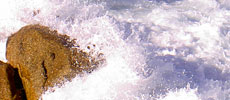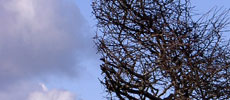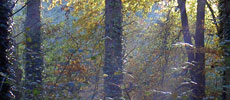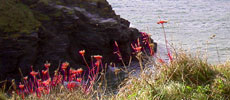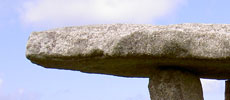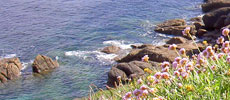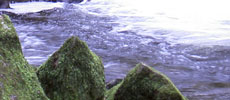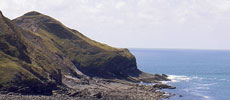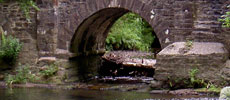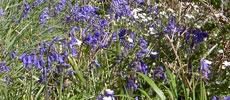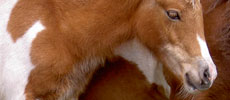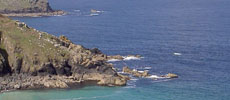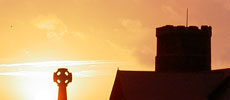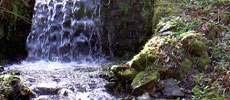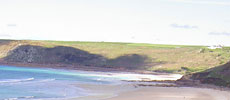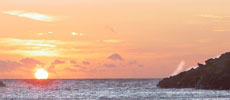Inspiration
Much of the inspiration for our work comes from North Cornwall, where we had been making annual holiday pilgrimages for some fifteen years. Fourteen years ago we moved down here to live permanently, and are now able to experience Cornwall's moods and mysteries throughout the entire wheel of the year. Why does Cornwall inspire us? Well, judge for yourselves - here are just a few of the many places we visit regularly to find peace, tranquillity, and inspiration.
There's a surprising variety of landscape in North Cornwall, the most striking being the perilous and craggy coves once haunted by smugglers and pirates, and the gentler sandy beaches now enjoyed by surfers and swimmers. Yet along the coast the wind has sculpted the trees into strange artforms, and there are mysterious valleys filled with dwarf oak trees and rushing streams that lead to the sea over tumbled rocks and waterfalls. The most famous are Saint Nectan's Glen and Rocky Valley (where you'll find ancient carved labyrinth symbols, as well as offerings left by travellers and pilgrims).
A few miles inland lies the mysterious Bodmin Moor, a relatively small area just ten miles by ten miles that was once home to bronze age settlers over 4000 years ago, and where as well as the scattered farmsteads and inquisitive sheep and ponies you can find stone circles, solitary standing stones, ancient burial chambers, and clapper bridges, as well as Jamaica Inn, made famous in the book of the same name by Daphne du Maurier. There are even occasional sightings of the Beast Of Bodmin, believed to be some type of big cat.
Many ancient churches are to be found in North Cornwall too, sometimes hidden in dark valleys or surrounded by mossy banks. Inside them you can find carved mermaids, green men, gargoyles, and other mysterious creatures, while in the churchyards and in other isolated settings are tiny chapels and sacred wells. North Cornwall has long been associated with mystery and magic, with the famed castle at Tintagel tenuously clinging to its associations with King Arthur, plus the Museum of Witchcraft at Boscastle where you can study the world's largest collection of witchcraft-related artefacts.
